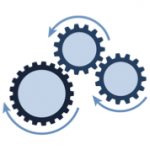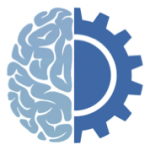
Engagement Solution
BOOSTING ENGAGEMENT AND HAPPINESS IN THE WORKPLACE
Employee engagement is the extent to which employees feel passionate about their jobs, are committed to the organisation, and put discretionary effort into their work. It is employee’s emotional connection to their organisation that motivates the employee to become fully involved and enthusiastic about their work.
Gallup research shows that employee disengagement costs the United States more than $550 billion a year in lost productivity. Organisations with the highest employee engagement levels are 21 per cent more profitable than those with low engagement levels.
Employee engagement is not the same as employee satisfaction. Employee Satisfaction only indicates how happy or content your employees are. It does not address their level of motivation, involvement, or emotional commitment.
We have the knowledge and tools to boost your employee engagement and reap the benefits of higher employee engagement.

Employee Engagement
Employee engagement strategies have been proven to reduce staff turnover, improve productivity and efficiency, retain customers at a higher rate, and make more profits. Most importantly, engaged employees are happier, both at work and in their lives.
To make engagement happen, it is important for organisations to understand their employee’s perspectives and to understand whether or not it has the baseline engagement level within.
When employees are engaged at work, they feel a connection with the company. They believe that the work they’re doing is important and therefore work harder. The benefits that employers receive from having engaged employees are numerous. Such benefits include; stronger customer relationships, longer employee tenure, increased productivity, higher job satisfaction, and increased organisational commitment.

Employee Productivity
Productivity is a measure of the efficiency of production. It is a ratio of actual output (production) to what is required to produce it (inputs). For businesses, productivity growth is important because providing more goods and services to consumers translates to higher profits.
Productivity is defined as the efficient use of resources, labour, capital, land, materials, energy, information, in the production of various goods and services. Higher productivity means accomplishing more with the same amount of resources or achieving higher output in terms of volume and quality from the same input.
Employee productivity (sometimes referred to as workforce productivity) is an assessment of the efficiency of a worker or group of workers. Typically, the productivity of a given worker will be assessed relative to an average for employees doing similar work.
Increases in productivity allow firms to produce greater output for the same level of input.
Our employee productivity solution maximises your business productivity and creates the platform to realize true business success.

Employee Satisfaction
Employee satisfaction or job satisfaction is, how content or satisfied employees are with their jobs. It describes whether employees are happy and contented and fulfilling their desires and needs at work.
Irrespective of job title and pay grade, employees who report high job satisfaction tend to achieve higher productivity. When employees feel the company has their best interests at heart, they often support its mission and work hard to help achieve its objectives.
It is important to know the differences between Employee Satisfaction, Engagement and Happiness. An employee can be satisfied with a job without being engaged in the job.
Employee satisfaction is measured using an employee satisfaction assessment. Factors that influence employee satisfaction addressed in this assessment include compensation, workload, perceptions of management, flexibility, teamwork, resources, etc.
We help you discover the best practices you can do in the job environment to raise your employees’ job satisfaction quickly.

Employee Happiness
Happiness is a sense of well-being, joy, or contentment. When people are successful, or safe, or lucky, they feel happiness. A happy employee is likely to work harder, take less time off sick, have better mental health and create close working relationships with effective communication.
Happiness is an abstract feeling. Often, it is only partially impacted by an individual’s perception or experience of work; happiness can be impacted by any number of things outside of the work environment. Unhappiness in the work place can impact an individual’s mental and physical health.
Happiness is more closely related to employee engagement. Satisfied employees aren’t always engaged or happy employees. Engagement is a measurable state that directly impacts on business outcomes.
Employees who are highly engaged in their work and satisfied with their careers as a whole are happy in their lives. Happy workers are productive workers.

Human Performance Technology
Human performance technology (HPT) is a systematic approach to improving individual and organisational performance. HPT is a combination of three fundamental processes: performance analysis, cause analysis, and intervention selection, and can be applied to individuals, small groups, and large organizations.
Our organisational performance assessment and analysis system (OPAM) was designed and developed to measure and profile organisational performance and consensus levels in nine critical areas, and to assess, the impact of these activities on organisational performance.
Information is collected, analysed and evaluated in the following areas:
- Mission, Values & Policies
- Management & Leadership
- Incentives & Rewards
- Information & Feedback
- Tools, Materials & Equipment
- Work Environment
- Employees’ Skills & Knowledge
- Employees’ Abilities & Aptitude
- Employees’ Engagement












